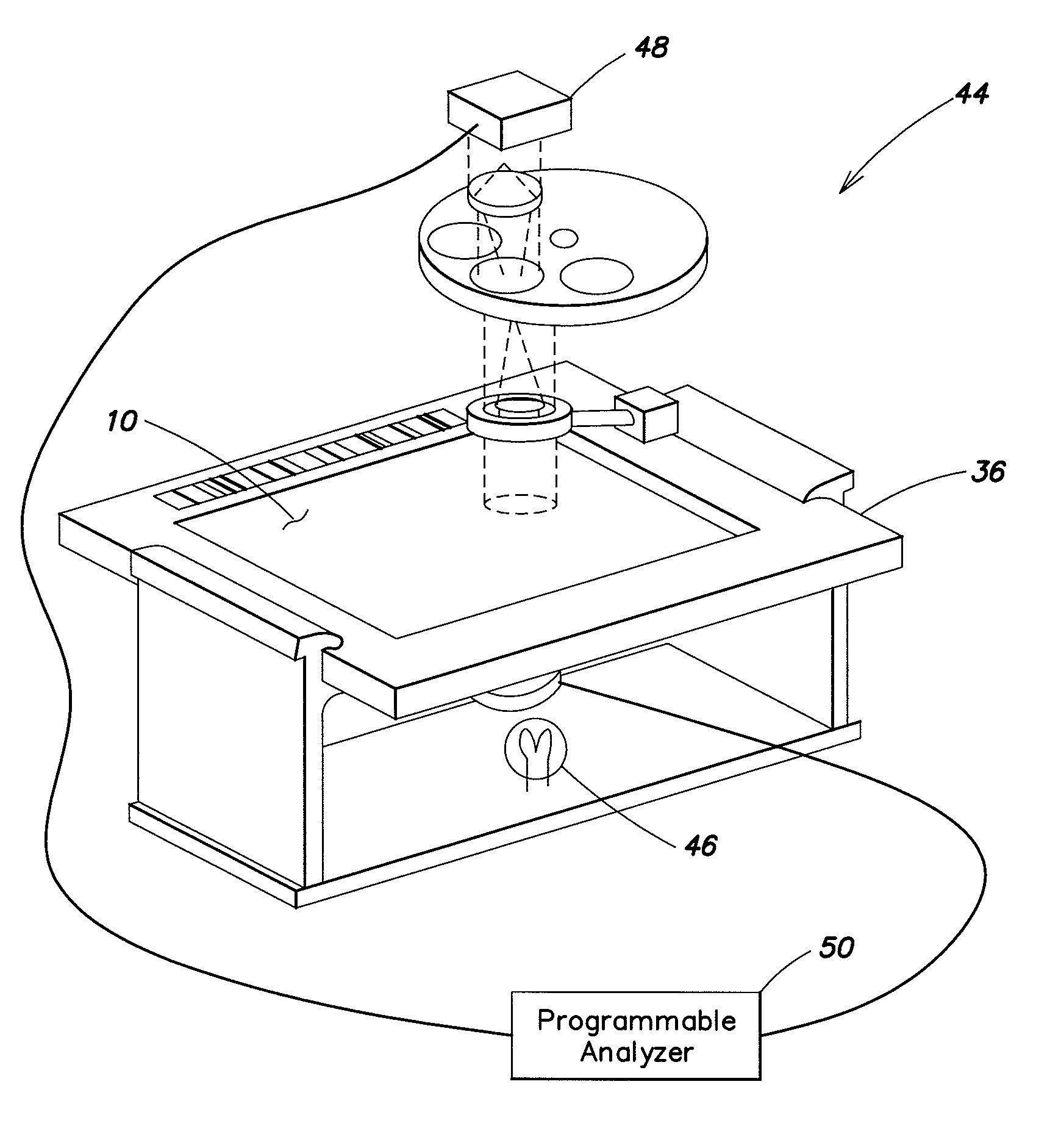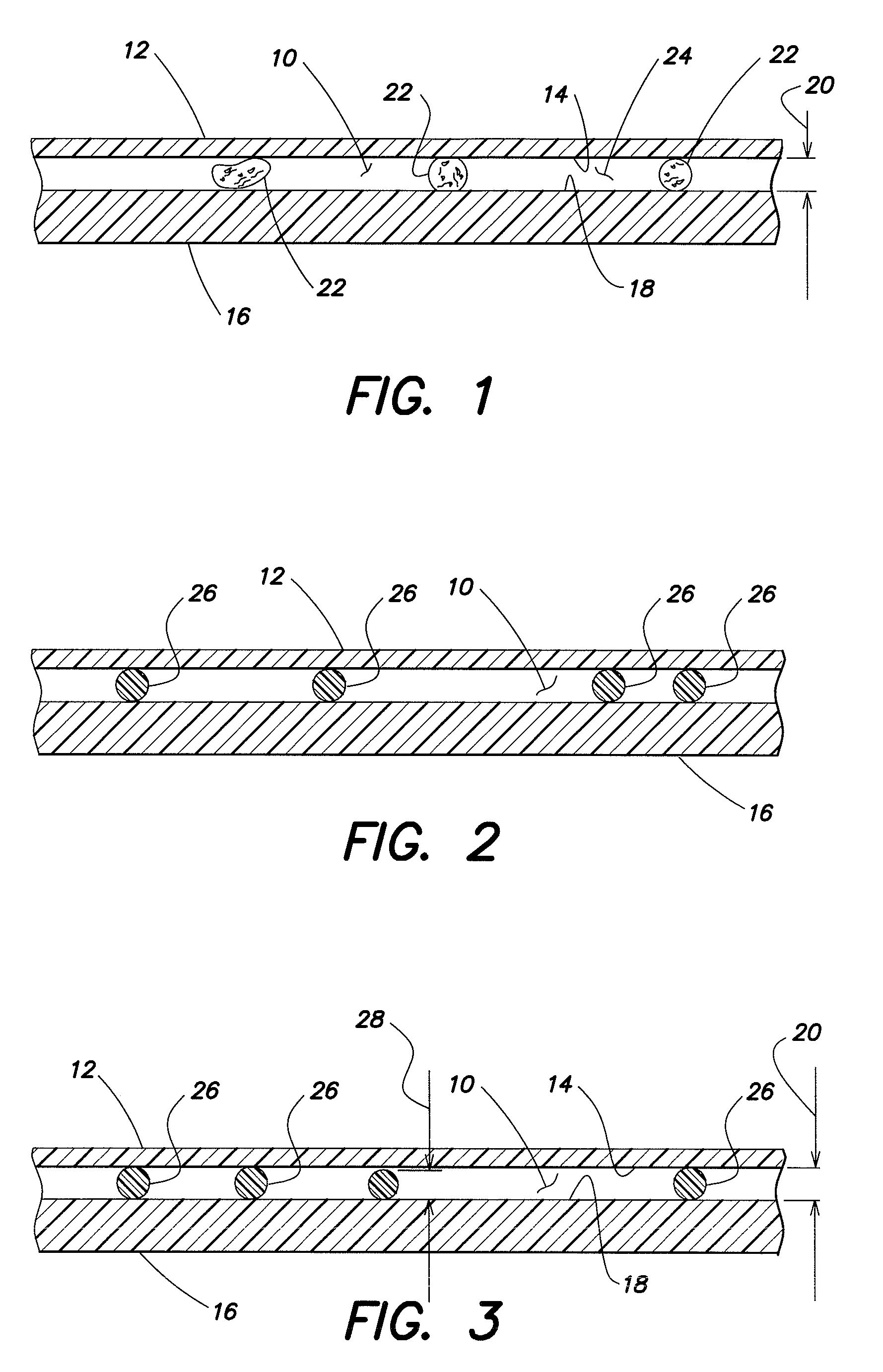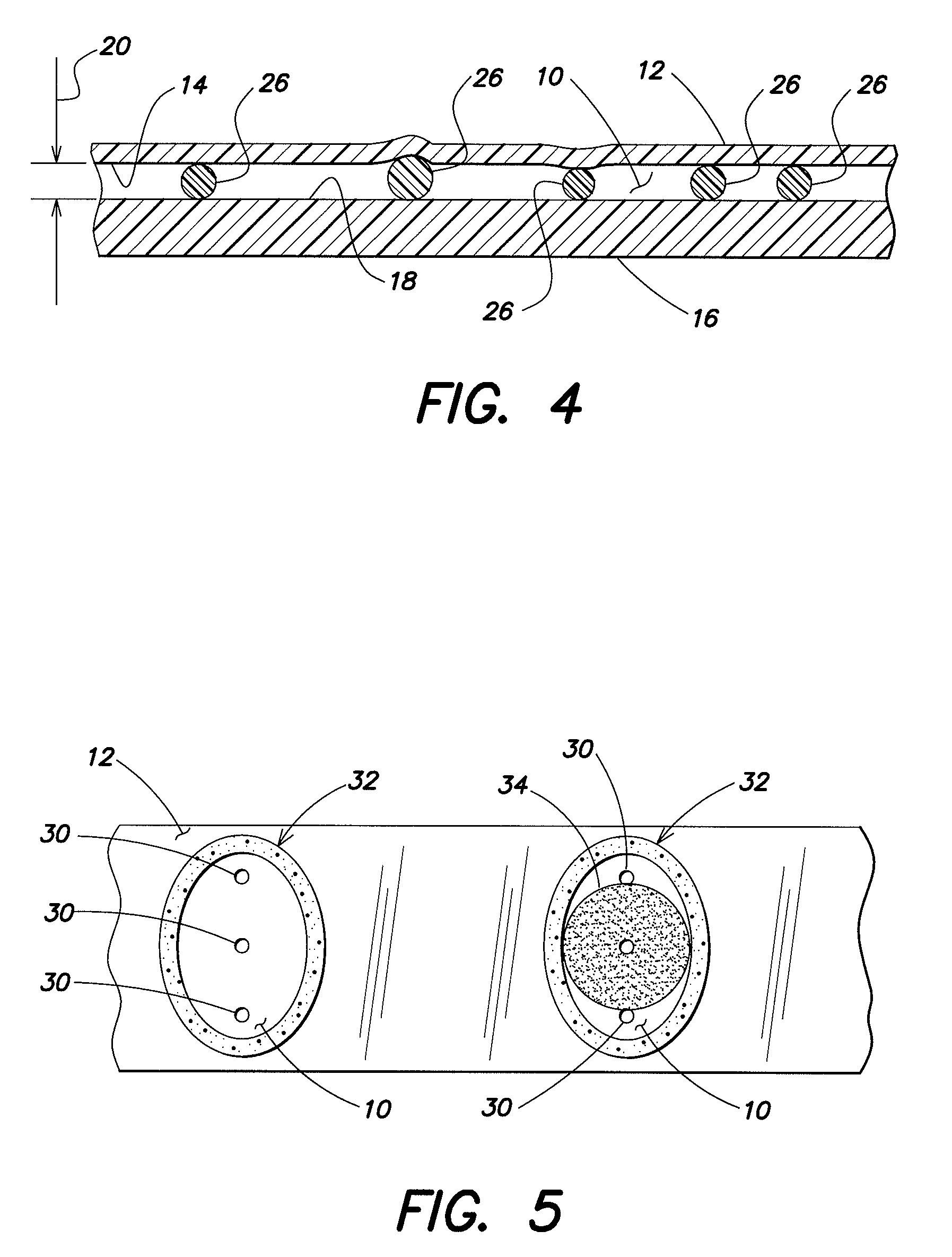Method and apparatus for detecting and counting platelets individually and in aggregate clumps
a technology of platelet clumps and aggregates, applied in the field of apparatus and methods for can solve the problems of affecting the analysis of blood samples, forming platelet clumps within blood samples collected for analysis, and being unable to be useful, etc., to achieve accurate platelet counts, falsely high white blood cell counts, falsely low platelet counts
- Summary
- Abstract
- Description
- Claims
- Application Information
AI Technical Summary
Benefits of technology
Problems solved by technology
Method used
Image
Examples
Embodiment Construction
[0027]The present method generally utilizes an analysis chamber that is operable to quiescently hold a sample of substantially undiluted anticoagulated whole blood for analysis. The chamber is typically sized to hold about 0.2 to 1.0 μl of sample, but the chamber is not limited to any particular volume capacity, and the capacity can vary to suit the analysis application. The phrase “substantially undiluted” as used herein describes a blood sample which is either not diluted at all or has not been diluted purposefully, but has had some reagents added thereto for purposes of the analysis. To the extent the addition of the reagents dilutes the sample, if at all, such dilution has no clinically significant impact on the analysis performed. Typically, the only reagents that will be used in performing the present method are anticoagulants (e.g., EDTA, heparin) and colorants. These reagents are generally added in dried form and are not intended to dilute the sample. Under certain circumsta...
PUM
| Property | Measurement | Unit |
|---|---|---|
| volume capacity | aaaaa | aaaaa |
| wavelengths | aaaaa | aaaaa |
| wavelengths | aaaaa | aaaaa |
Abstract
Description
Claims
Application Information
 Login to View More
Login to View More - R&D
- Intellectual Property
- Life Sciences
- Materials
- Tech Scout
- Unparalleled Data Quality
- Higher Quality Content
- 60% Fewer Hallucinations
Browse by: Latest US Patents, China's latest patents, Technical Efficacy Thesaurus, Application Domain, Technology Topic, Popular Technical Reports.
© 2025 PatSnap. All rights reserved.Legal|Privacy policy|Modern Slavery Act Transparency Statement|Sitemap|About US| Contact US: help@patsnap.com



